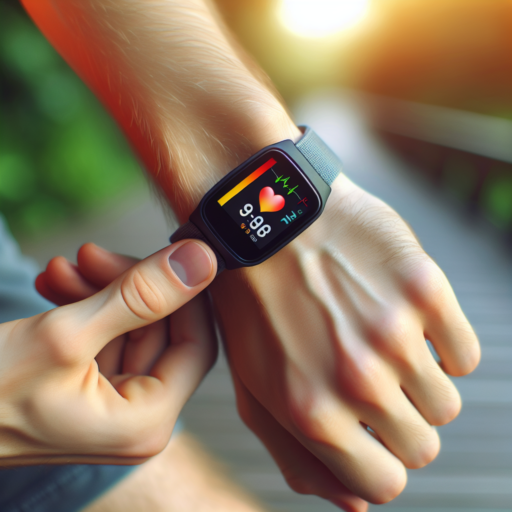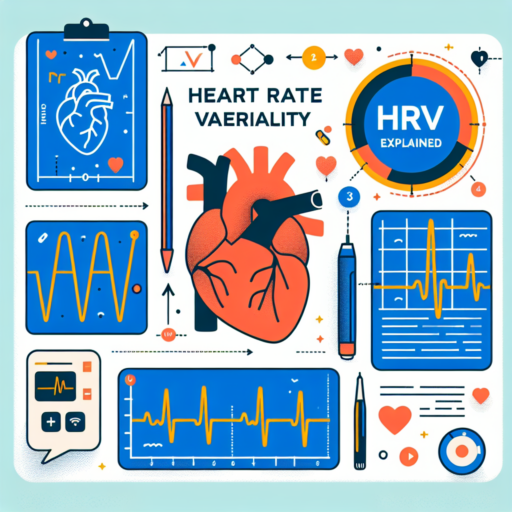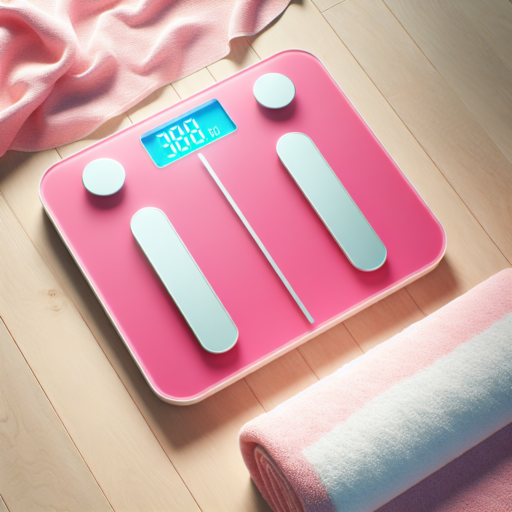What is a Wrist HRM and How Does It Work?
A Wrist HRM, or Heart Rate Monitor, is a cutting-edge device designed to measure and track the heart rate of an individual directly from their wrist. This type of HRM utilizes advanced sensor technology to provide real-time data on how fast your heart is beating. Unlike traditional heart rate monitors, which often require a chest strap, wrist HRMs offer a more convenient and comfortable way to gather heart rate data, making them a favorite among athletes, fitness enthusiasts, and those monitoring their health for medical reasons.
Understanding the Technology Behind Wrist HRMs
Wrist HRMs work using optical sensors that sit snugly against the skin. These sensors emit light that penetrates the skin and allows the device to detect blood flow and volume changes. By analyzing these changes, the HRM can calculate the beats per minute (BPM) of the user’s heart. This process, known as photoplethysmography (PPG), is highly sophisticated but offers the simplicity of a non-invasive measure of heart rate.
The Benefits of Using a Wrist HRM
Wrist HRMs are hailed for their convenience but have also shown to be incredibly accurate, provided they are worn correctly. They allow users to monitor their heart rates continuously, not only during exercise but also throughout the day. This continuous monitoring can help identify trends in heart health, exertion levels during workouts, and even help manage stress. The data collected can also be synchronized with smartphones or sports watches, enabling users to analyze their performance and health metrics over time.
In summary, wrist HRMs represent a significant leap in the way we monitor and understand our heart rates. Their innovative optical sensor technology and convenience of use offer a straightforward and effective approach to heart rate monitoring for individuals of all fitness levels.
No se han encontrado productos.
The Benefits of Using a Wrist HRM for Athletes and Fitness Enthusiasts
Monitoring athletic performance and fitness levels has become increasingly sophisticated with the advent of wrist Heart Rate Monitors (HRMs). These devices offer a plethora of advantages for athletes and fitness enthusiasts alike. By providing real-time feedback on heart rate, these wearable technologies enable users to optimize their workouts, ensure they are training within the correct heart rate zones, and significantly improve their fitness outcomes.
One of the key benefits of using a wrist HRM is its ability to enhance workout efficiency. For athletes, understanding how their body responds to different types of training can be crucial for maximizing performance. A wrist HRM accurately tracks heart rate variability, allowing users to adjust their intensity levels in real-time. This means they can avoid under or overtraining, making each session as effective as possible. Fitness enthusiasts looking to lose weight or improve cardiovascular health also find this feature invaluable as it helps them to stay within their ideal fat-burning or aerobic zones.
Easy Accessibility and Comfort
Traditional heart rate monitors, which often require cumbersome chest straps, have been surpassed in comfort and convenience by wrist HRMs. These gadgets offer continuous heart rate monitoring without the need for additional equipment, making them an ideal choice for long-duration workouts and daily wear. Athletes can effortlessly keep track of their heart rates without interrupting their activities, providing a seamless integration of fitness tracking into their lifestyle.
Top Features to Look for in a High-Quality Wrist HRM
When it comes to optimizing your training and monitoring your health, a wrist Heart Rate Monitor (HRM) is an essential tool. However, with so many options on the market, identifying the most useful features can be a challenge. Highlighting the top features to look for in a high-quality wrist HRM will ensure you make an informed choice that aligns with your fitness goals and lifestyle needs.
Continuous Heart Rate Monitoring
One critical feature to consider is continuous heart rate monitoring. Unlike older models, which required the user to initiate a reading, modern wrist HRMs offer real-time tracking. This continuous monitoring is crucial for accurate data collection over the entire day and during various activities, providing insights into your heart health, workout intensity, and recovery status.
Water Resistance
For athletes and fitness enthusiasts who incorporate swimming into their routine or those looking for a device that can withstand all weather conditions, water resistance is a non-negotiable feature. A high-quality wrist HRM should function seamlessly whether you’re swimming laps, caught in the rain, or sweating it out during an intense workout session. This durability ensures that your HRM remains an integral part of your fitness journey, regardless of the environment.
Efficiency and user experience are also enhanced by features like a long-lasting battery, intuitive user interface, and seamless connectivity with smartphones and fitness apps. Ensuring your wrist HRM is equipped with these capabilities will enhance its usability and your motivation to maintain an active and healthy lifestyle.
Comparing Popular Wrist HRM Models: Which One Is Best for You?
When it comes to tracking your heart rate and overall fitness, wrist HRM (Heart Rate Monitor) models have become increasingly popular. These gadgets offer convenience, accuracy, and a wealth of features to help you stay on top of your health game. Let’s dive into what makes these models stand out and how to choose the perfect one for your needs.
Different wrist HRM models cater to various preferences and requirements. For instance, athletes may prioritize precision and durability, while casual users might value comfort and ease of use. Brands like Fitbit, Garmin, and Apple Watch are at the forefront, offering devices that not only track heart rate but also provide comprehensive health tracking features. These include sleep analysis, activity tracking, and even stress monitoring, making them indispensable tools for a holistic approach to health and fitness.
When considering which model is best for you, it’s essential to evaluate the specific features you need. Do you require detailed insights into your biometrics, or are you looking for a simple device that just covers the basics? Battery life is another critical factor, as it can range from a day to several weeks, depending on the model. Additionally, compatibility with your smartphone and other devices will ensure you can effortlessly sync and access your data, enriching your health management experience.
How to Use Your Wrist HRM for Optimal Training Results
Para sacar el máximo partido a tus entrenamientos, es fundamental comprender cómo utilizar de manera efectiva tu monitor de frecuencia cardíaca de muñeca (HRM). Este dispositivo puede ser una herramienta poderosa si se utiliza correctamente, permitiéndote entrenar más inteligentemente y alcanzar tus metas de fitness con mayor eficacia.
Antes de iniciar cualquier sesión de entrenamiento, es crucial asegurarte de que el HRM esté colocado correctamente en tu muñeca. No debe estar ni demasiado apretado ni muy suelto; una posición intermedia asegurará lecturas precisas sin comprometer tu confort. Es recomendable colocar el monitor a unos dos dedos de distancia del hueso de la muñeca para evitar interferencias con el movimiento o la circulación sanguínea.
Interpreta Correctamente los Datos
Una vez que tu HRM esté en su lugar y comiences a entrenar, es imperativo prestar atención a los datos que este te proporciona. La frecuencia cardíaca en reposo, la frecuencia cardíaca máxima durante el ejercicio y el seguimiento de la zona de frecuencia cardíaca son tres indicadores clave que te permitirán ajustar la intensidad de tu entrenamiento. Aprender a interpretar estos datos te ayudará a evitar sobreentrenamientos, así como a asegurarte de que estás ejercitando en el rango óptimo para promover la mejora cardiovascular y la quema de grasa.
Planifica Tus Sesiones de Entrenamiento Basadas en HRM
Utilizar la información que tu monitor proporciona para planificar tus sesiones puede marcar una gran diferencia en la eficacia de tu entrenamiento. Por ejemplo, alternar días de entrenamiento con alta intensidad basada en las zonas de alta frecuencia cardíaca, con días de entrenamiento más ligero atendiendo a zonas más bajas, puede optimizar el tiempo de recuperación y mejorar el rendimiento. La clave está en equilibrar correctamente los periodos de esfuerzo y recuperación basándote en los datos específicos de tu cuerpo.
Troubleshooting Common Issues with Wrist HRMs
Wrist heart rate monitors (HRMs) have become essential tools for athletes and fitness enthusiasts aiming to track their heart rates in real-time. However, these devices can sometimes present challenges that may affect their accuracy and performance. Identifying and addressing these common issues can ensure your HRM provides reliable data to help you achieve your fitness goals.
Ensuring Proper Fit and Position
One of the most crucial steps in troubleshooting wrist HRM issues is ensuring the device is worn correctly. A fit that’s too loose or too tight can significantly impact the HRM’s ability to record accurate data. The HRM should be positioned snugly above the wrist bone, allowing the sensor to maintain constant contact with the skin without restricting blood flow. Adjusting the strap to find the perfect balance of tightness and comfort is key to improving the device’s accuracy.
Addressing Skin and Environmental Factors
External factors such as skin type, tattoos, and even environmental conditions can interfere with the HRM’s sensor. For those with dry skin or tattoos on the wrist, applying a small amount of moisturizer or adjusting the HRM’s position may enhance its ability to detect heart rate signals. Additionally, extreme temperatures can affect the sensor’s functionality, suggesting the need for users to be mindful of their surroundings when relying on wrist HRMs for heart rate data.
Integrating Your Wrist HRM with Other Fitness Technology
Integrating your wrist Heart Rate Monitor (HRM) with other pieces of fitness technology can significantly enhance your training experience and provide you with a comprehensive view of your physical health. By combining your wrist HRM data with other devices, you gain deeper insights into your workout performance, recovery, and overall wellness. This synergy allows for personalized fitness guidance that adapts to your specific needs and goals.
Connecting with Smartphones and Apps: The first step in this integration is often linking your wrist HRM with your smartphone. Numerous fitness apps can sync with your device, offering a centralized platform for tracking your workouts, analyzing heart rate data, and setting fitness goals. This connectivity ensures that every beat of your heart and every step you take are recorded, analyzed, and turned into actionable insights. By doing so, you can adjust your training intensity, duration, and frequency based on reliable data.
Integration with Fitness Equipment: Beyond smartphones, modern fitness equipment such as treadmills, bikes, and elliptical machines can connect with wrist HRMs to provide a seamless workout experience. This integration enables the equipment to adjust its settings automatically based on your heart rate, ensuring that you remain in the optimal training zone for your fitness objectives. Whether you’re aiming for fat loss, endurance improvement, or strength building, your wrist HRM, in conjunction with these smart machines, can help you train more efficiently and effectively.
Understanding the Accuracy of Wrist HRMs: What You Need to Know
When it comes to monitoring your heart rate, wrist HRMs (Heart Rate Monitors) have become a popular choice for their convenience and ease of use. However, questions often arise regarding how accurate wrist HRMs truly are. It’s essential to delve into the factors that influence their precision to make an informed decision about their utility for your fitness and health tracking needs.
Factors Influencing Wrist HRM Accuracy
Several factors can affect the accuracy of wrist HRMs. Primarily, the fit of the device on your wrist plays a critical role. A wrist HRM that’s too loose may not maintain consistent contact with your skin, leading to inaccurate readings. Additionally, the technology behind the device, such as optical heart rate sensors, can vary significantly in quality among different models and brands. Factors like skin tone, hair density, and even body movement during exercise can also impact the precision of the readings you receive.
Understanding the limitations and strengths of wrist HRMs can guide users in making better use of these devices. For instance, while they may offer considerable convenience, they might not always match the accuracy of chest strap monitors, especially during high-intensity workouts where more rapid heart rate variations occur. It’s important for users to consider what they need from a heart rate monitor and how they plan to use it in their fitness regimen.
The Future of Heart Rate Monitoring: Trends and Innovations in Wrist HRMs
Wrist-based Heart Rate Monitors (HRMs) are at the forefront of a technological revolution in personal health and fitness tracking. As we navigate through an era where wearable technology becomes more prevalent, the future of heart rate monitoring shines bright with innovative trends aimed at making health tracking more accessible, accurate, and integrated into our daily lives. Among these trends, advancements in sensor technology and machine learning stand out, propelling the capabilities of wrist HRMs far beyond their current state.
Significant strides in sensor technology are shaping the future of wrist HRMs. Modern sensors are gearing towards not just measuring heart rates but understanding the nuances of blood flow, oxygen levels, and even stress markers through advanced photoplethysmography (PPG) techniques. These improvements aim to offer a more comprehensive overview of a user’s cardiac health, potentially identifying early signs of heart-related issues more effectively than ever before.
Another exciting development in the realm of wrist HRMs is the integration of machine learning algorithms. The ability of these algorithms to learn and predict patterns in heart rate data can transform how we approach heart health. From detecting irregular heartbeats to predicting potential heart diseases before they become critical, machine learning in wrist HRMs could lead to preemptive healthcare strategies, significantly impacting overall well-being and medical interventions.
Choosing the Right Wrist HRM: A Buyer’s Guide for 2023
With the advancement of wearable technology, selecting the right wrist-based Heart Rate Monitor (HRM) has become an essential decision for many fitness enthusiasts and athletes alike in 2023. A wrist HRM is not just a tool for tracking your heart rate; it’s an integral part of a comprehensive fitness tracking setup. It offers insights into your cardiovascular health, workout intensity, and can even guide your training sessions towards optimal efficiency and safety.
Understanding Your Needs and Preferences
Before diving into the plethora of options available, it’s crucial to assess your needs. Ask yourself what primary features you are looking for in a wrist HRM. Do you need something straightforward for monitoring heart rate, or are you looking for a device that offers advanced metrics, such as VO2 max estimation, real-time recovery advice, sleep tracking, and more? Also, consider the comfort and style of the device since it will be a constant companion on your wrist. The right wrist HRM should not only meet your technical requirements but also fit your personal style and comfort preferences.
Key Features to Look for in 2023
When it comes to wrist HRMs in 2023, several key features stand out. Firstly, accuracy is paramount. Look for devices that offer close-to-chest strap accuracy. Connectivity with smartphones and other devices is also crucial for easy access to your data and insights. Additionally, battery life can be a deal-breaker; opt for models that offer long-lasting battery to avoid frequent charges. Lastly, consider opting for a water-resistant model if your exercises often involve water or you require a device capable of tracking swimming sessions.
By focusing on these specific aspects, you are better prepared to navigate the wide array of wrist HRMs available on the market today. Remember, the ultimate goal is to find a device that supports your fitness journey by providing accurate, useful data in a comfortable and convenient form factor.




